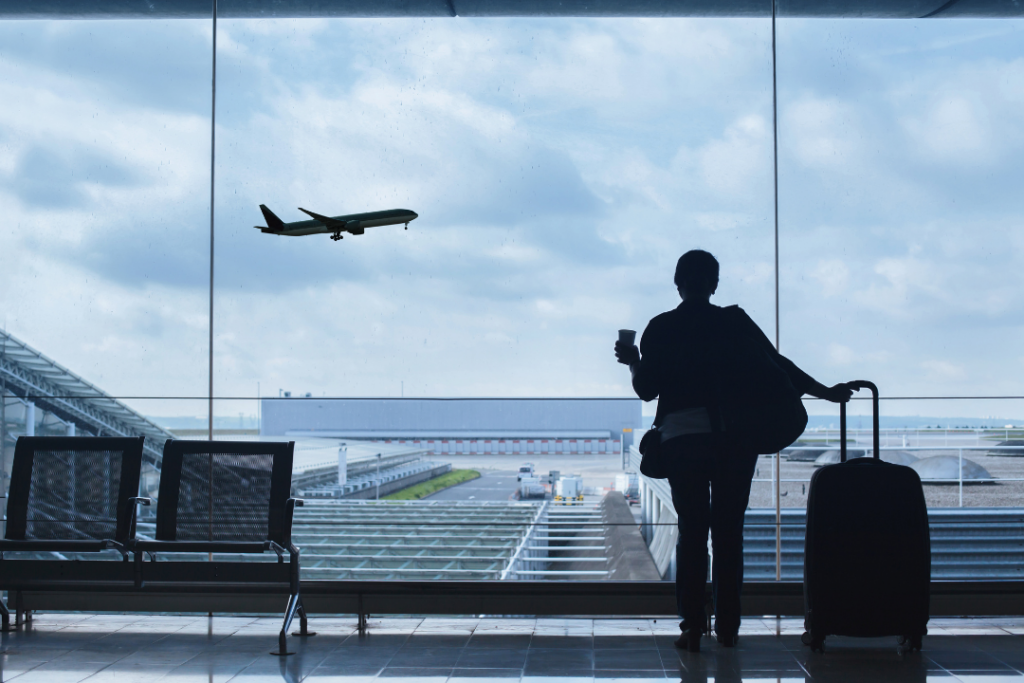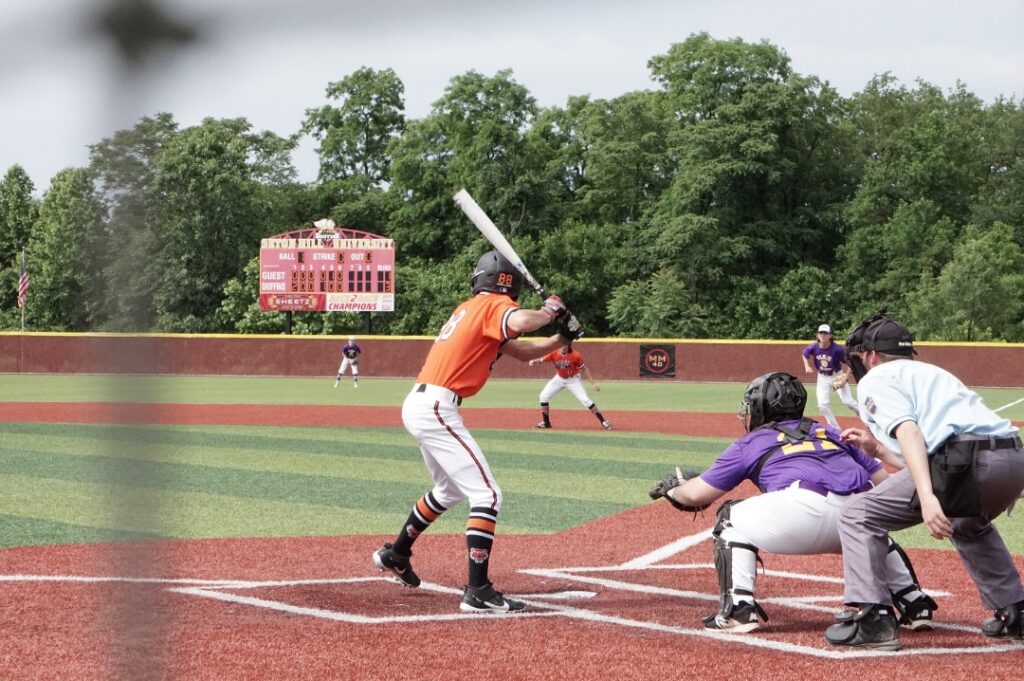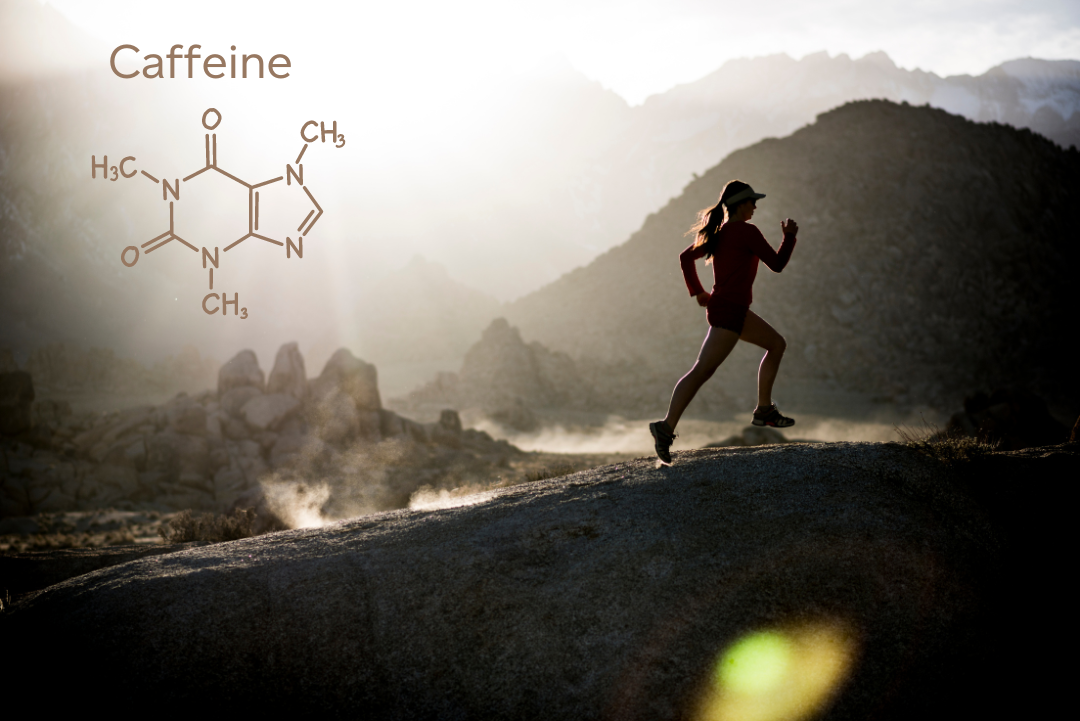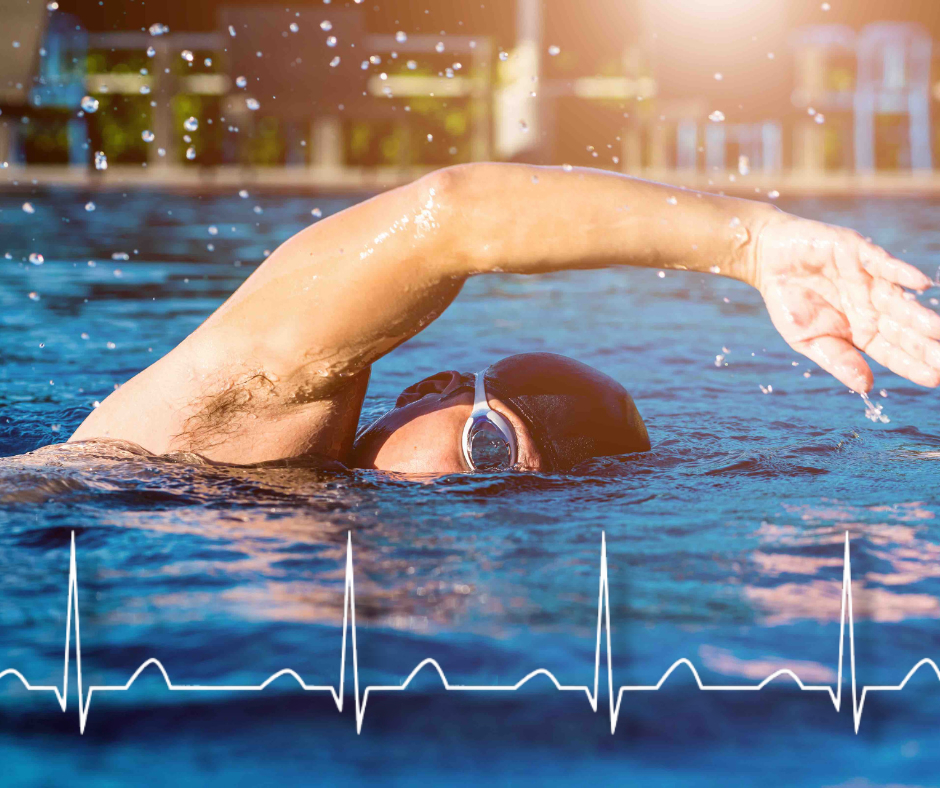

Beating Jet Lag: A Guide to Strategic Light Exposure
While many strategies exist to combat jet lag — from adjusting meal times to taking melatonin to tweaking sleep schedules — exposure to light is one of the most powerful natural remedies (1, 2, 3). In conversation with Dr. Jamie Zeitzer, we explore how to harness light in your favor to achieve optimal performance in different time zones.
May 8, 2024

Jamie Zeitzer, PhD
Dr. Jamie Zeitzer is a Professor (Research) of Psychiatry and Behavioral Sciences – Sleep Medicine at Stanford University. Specifically, he is circadian physiologist specializing in the understanding of the impact of light on circadian rhythms and other aspects of non-image forming light perception.
You’ve just landed at your destination. It’s the middle of the day, but you go straight to the hotel for a long nap. The culprit? Jet lag, a familiar foe for millions of globetrotters crossing time zones each year.
Whether you’re a sprinter flying across the continent for a championship race or a traveler on vacation, jet lag is a common hurdle. But in sports, where milliseconds can separate athletes at the finish line, every detail matters. The last thing athletes want is to be fatigued and disoriented on game day.
As Dr. Jamie Zeitzer and colleagues explain, “Having to respond to mental challenges when their brains are prepared to sleep puts them at reduced cognitive capacity and can result in impaired reaction time and decision-making.”1
Why Do We Experience Jet Lag?
Jet lag is no surprise, really. Human evolution did not equip us with the ability to cruise through numerous time zones in just a few hours. Air travel exposes our bodies to a phenomenon we never would have encountered naturally. Jet lag may seem simple, but it’s actually a sophisticated interplay between our internal biological clocks and the external environment.

Canva Pro Images
Deep inside the brain in a region called the suprachiasmatic nucleus, there’s an internal ticking clock. Roughly every 24 hours, 20,000 pacemaker cells synchronize and signal to the rest of the body whether it is day or night. The primary cue for the pacemaker cells is light. These signals influence various physiological processes, including the release of hormones like melatonin and cortisol, which, in turn, regulate sleep-wake cycles and other bodily functions.
“You have a central circadian clock in the brain, but you also have molecular clocks in every tissue in your body,” said Dr. Zeitzer. “They are in your lungs, your liver, your skin, your immune cells — all these tissues have their own clocks. These clocks work in coordination, much like the conductor of an orchestra.” 2,4,5
When we rapidly cross time zones, we disrupt the routine of pacemaker cells and they struggle to synchronize to a new day-night rhythm. As a result, we experience the infamous brain fog and insomnia of jet lag (scientifically termed desynchronosis).6
Jet Lag’s Influence on Performance
A review of airline travel and physical performance noted that prospective and retrospective studies seem to show support for a deterioration in athletic performance after travel across multiple time zones. Furthermore, crossing more time zones seems to have an additive effect on performance deterioration.7
A few studies have attempted to tackle the question of jet lag outcomes for sports teams using many years of data. For example, one study analyzed 10 years’ worth of National Football League team performance data, while another examined 20 years’ worth of Major League Baseball team data.8,9 Both studies found that negative effects of jet lag are more evident after eastward, rather than westward, journeys.

Canva Pro Images
However, there are issues with evaluating jet lag study outcomes.7 For one, it’s difficult to disentangle jet lag from other factors such as habitual training times, time-of-day, and individual chronotypes. For example, a study analyzing Olympic swim times over a 12-year period found that time-of-day is a significant influence on performance.10
Second, some of the research is based on performance measures such as grip strength that provide a limited window into a person’s overall athletic performance. Additionally, past studies on this topic often only include a small number of participants. It is unclear how these can be generalized to overall athletic performance.7

Why is studying jet lag so complex?
There are many factors at play when trying to study circadian phase delay and jet lag. The phrase “correlation does not equal causation” is especially relevant here. It means that just because two things are related statistically (e.g., they are both trending upwards), it doesn’t mean one causes the other. There could be other factors at play (e.g., the time of day an athlete typically trains or general fatigue due to travel).
How Long Will My Jet Lag Last?
The more time zones you travel, the more your circadian clock falls out of sync with its rhythm. According to Dr. Zeitzer, a general guideline is to allow for about one day for adjustment per time zone traveled.1,2 The qualification of “about” one day is necessary; even though we all share a 24-hour daily cycle, our personal circadian clocks are not universally standardized.

Scott Thompson/Adobe Free Photos
“If you were kept in total darkness, your internal clock would run on average around 24 hours and 12 minutes,” said Dr. Zeitzer. “But for some people, it’s longer. For others, it’s shorter. Some people are night owls. Some people prefer morning hours.” 2
Did You Know?
On average, it takes about one day to adjust to each time zone crossed during travel. If you cross six time zones, it could take six days for your body to fully adapt to the new schedule.
Bright Ideas for Beating Jet Lag
Let’s be straightforward – there is no cure for jet lag. There are only strategies to reduce its severity. Light plays a crucial role in overcoming jet lag.1,2,3,6 A common misunderstanding, however, is that all light is equal.
“Understanding light intensity levels in different environments is key,” said Dr. Zeitzer. A person can adjust their circadian rhythms by approximately one hour each day if they expose themselves to the right amounts of light at the right times.1,11 Avoiding light at the correct times is also crucial for rapid adaptation to jet lag.
“The body does not look at light as an absolute quantity but rather as a relative quantity,” said Dr. Zeitzer.
When dealing with time zone changes of 12 hours or less, follow these general guidelines: When traveling Eastward, you want to get light in the morning and avoid light in the evening. When traveling Westward, avoid light in the morning and get light in the evening.
Did You Know?
Eastward travel across time zones is often harder to adjust to than Westward. It’s generally more challenging to fall asleep earlier when traveling East than stay awake later when traveling West.1,6 Our internal clocks naturally run a bit longer than 24 hours, and when there’s a lack of consistent light cues – such as when traveling across time zones – the pacemaker cells in our bodies tend to favor a longer day.12
How much light do you need, though? While common room light is between 50 and 250 lux (brighter in offices and bathrooms), outdoor light on a typical day in California can range from 50,000 to 100,000 lux.3 Even on cloudy or foggy days in California it’s around 10,000 lux.

Canva Pro Images
“If you are getting light after a night of sleep, even regular room light will impact your clock, so avoid this when going Westward,” said Dr. Zeitzer. “Going outside will be an even more potent stimulus.”
Light in the evening, however, is a little different because you’ve been exposed to light already during the day. “You’ll need brighter light to change your clock, especially if you have been outside during the daytime,” added Dr. Zeitzer. “So if you’ve traveled Eastward and are trying to avoid light in the evening, you don’t need to worry too much about the light you get in normal hotels if you have been outside during the daytime.13,14

How much light does a person need to adjust to non-jetlagged performance?
We don’t know the specific answer to this as the physiological drivers behind performance (muscle, neuromuscular, endocrine, metabolic, neural, etc.) are likely sport specific. Other variables like the timing of eating and exercise are capable of acting as secondary circadian cues and may alter the amount of light needed.
You can also start to synchronize your circadian rhythm before traveling. Consider the scenario of an athletic team moving eastward from Mountain Standard Time (MST) Zone to Eastern Standard Time (EST) Zone, where players “lose” two hours (e.g., from 8pm MST to 10pm EST). To acclimate to the new time zone prior to departure, athletes should aim to shift their circadian system by 2 hours. In the 2-3 days preceding travel, they should move their bedtime and wake time 30-60 minutes earlier than usual. Upon waking, they should expose themselves to bright light, getting outside being ideal. In the evening, they should try to dim the lights (e.g., turn off overhead lights and use a book light if needed) for 2 hours before going to sleep.1,6
For those with limited access to sunshine, you can also try a light therapy box. Ideally, the light box should be rated to emit 10,000 lux of light and minimize as much UV light as possible.3
Is a light box right for me?
It’s advisable to consult with your healthcare provider when selecting a light box. The Mayo Clinic warns that increasing exposure too fast or for too long can induce manic symptoms in people with bipolar disorder. Individuals with a history of eye issues like glaucoma, cataracts, or diabetes-related eye damage should also seek guidance from their eye specialist before starting light therapy.
Planning the optimal timing of light exposure across different time zones can be tricky, so consider exploring apps that specialize in planning light exposure before travel. These apps help create a personalized schedule based on factors like time zone differences, departure and arrival times, and more.
Additional behaviors like the timing of food intake, sleep, exercise, and melatonin can all help with jet lag.1,2,6 Look out for more on these influences in future Playbook articles.

Training Tip
To combat jet lag, strategic planning is essential. Adjusting natural light exposure based on the direction of travel—more light in the morning and less in the evening if you’re traveling eastward, more light in evening and less in the morning if you’re traveling westward—can aid in faster synchronization.
Get Deeply Researched Insights on Human Performance
Join our mailing list to get actionable performance tips and nuanced explanations of the science.
Citations
- Heller H. C., Herzog E., Paul Ketema, et al. (2024). The negative effects of travel on student athletes through sleep and circadian disruption. Journal of Biological Rhythms. 39(1):5-19. https://doi.org/10.1177/07487304231207330
- Arendt J. (2018). Approaches to the pharmacological management of jet lag. Drugs. 78: 1419–1431. https://doi.org/10.1007/s40265-018-0973-8
- Blume C., Garbazza C., Spitschan M. (2019). Effects of light on human circadian rhythms, sleep and mood. Somnologie. 23(3):147-156. https://doi.org/10.1007/s11818-019-00215-x.
- Crank S., Du Pré B. C., Sluijter J. P. G., et al. (2019). Circadian rhythms and the molecular clock in cardiovascular biology and disease. Nature Reviews Cardiology. 16: 437–447. https://doi.org/10.1038/s41569-019-0167-4
- Patke A., Young M. W., Axelrod S. (2020). Molecular mechanisms and physiological importance of circadian rhythms. Nature Reviews Molecular Cell Biology. 21: 67–84. https://doi.org/10.1038/s41580-019-0179-2
- Waterhouse J., Reilly T., Atkinson G., Edwards B. (2007). Jet lag: trends and coping strategies. Lancet. 369(9567):1117-29. https://doi.org/10.1016/S0140-6736(07)60529
- Leatherwood W., Dragoo J. (2013). Effect of airline travel on performance: a review of the literature. British Journal of Sports Medicine. 47:561-567. https://doi.org/10.1136/bjsports-2012-091449
- Jehue, R., Street D., Huizenga R. (1993). Effect of time zone and game time changes on team performance: National Football League. Medicine & Science in Sports & Exercise. 25(1):127-131.
- Song A., Severini T., Allada R. (2017). How jet lag impairs Major League Baseball performance. Proceedings of the National Academy of Sciences. 114(6):1407-1412. https://doi.org/10.1073/pnas.1608847114
- Lok R., Zerbini G., Gordijn M. C. M., et al. (2020). Gold, silver or bronze: circadian variation strongly affects performance in Olympic athletes. Scientific Reports. 10:16088. https://doi.org/10.1038/s41598-020-72573-8
- Morgenthaler T. I., Lee-Chiong T., Alessi C., et al. (2007). Practice parameters for the clinical evaluation and treatment of circadian rhythm sleep disorders. Sleep. 30(11):1445–1459. https://doi.org/10.1093/sleep/30.11.1445
- Lu Z., Klein-Cardeña K., Lee S., et al. (2016). Resynchronization of circadian oscillators and the east-west asymmetry of jet-lag. Chaos. 26(9):094811. https://doi.org/10.1063/1.4954275.
- Chang A., Scheer F., Czeisler C. (2011). The human circadian system adapts to prior photic history. The Journal of Physiology. 589(Pt 5):1095-102. https://doi.org/10.1113/jphysiol.2010.201194.
- Gooley, J.J. (2017). Light resetting and entrainment of human circadian rhythms. Biological Timekeeping: Clocks, Rhythms and Behaviour. Springer. https://doi.org/10.1007/978-81-322-3688-7_14
Playbook Terms of Use & Copyright
©2023-2024



